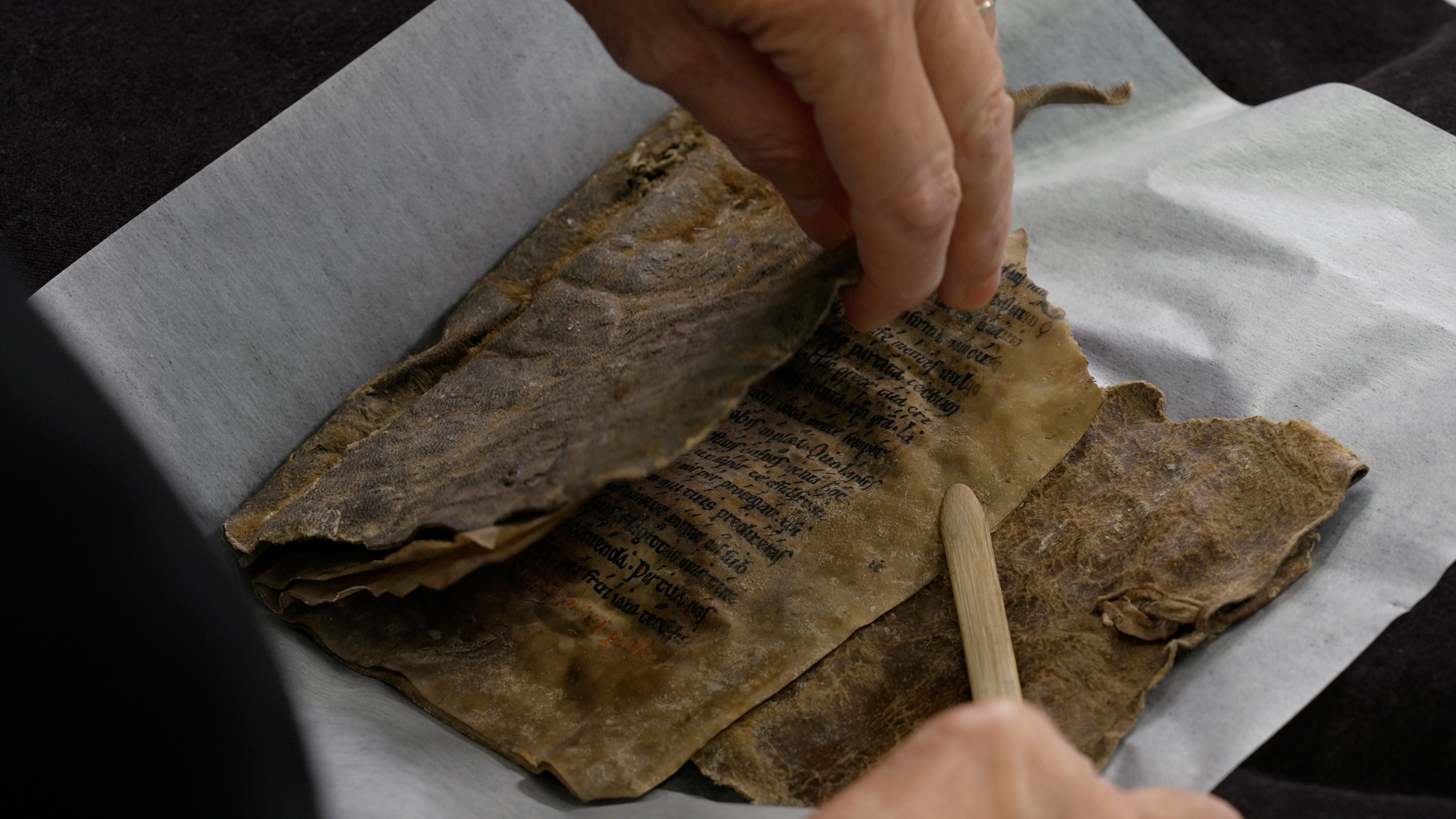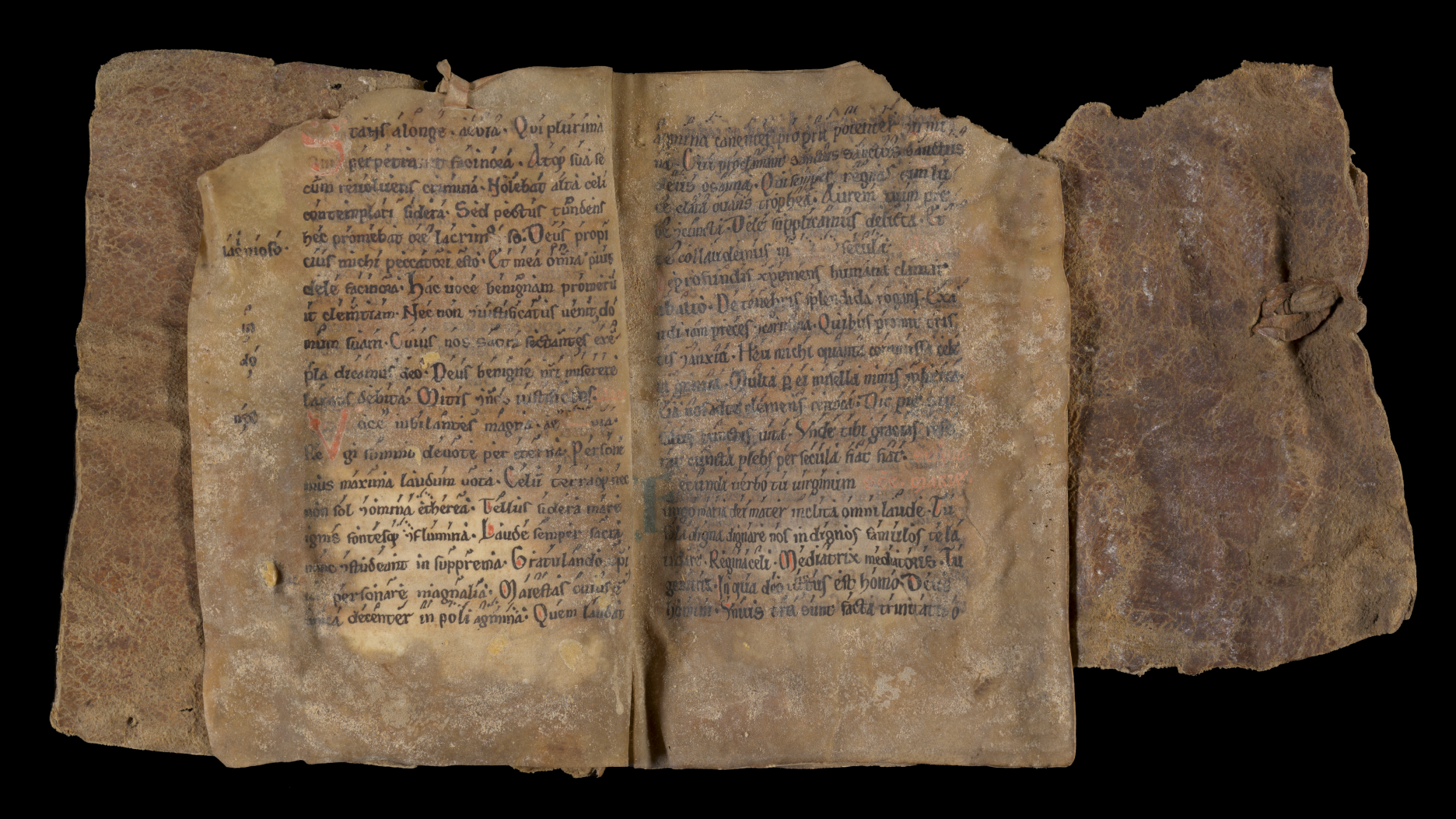13th-century Christian songbook made of furry sealskin may be Norway's oldest surviving book
Experts at the National Library of Norway believe the liturgical songbook was made by a local artisan around A.D. 1200.

A recently analyzed medieval codex covered in furry sealskin may be the oldest surviving book from Norway. The small Christian songbook was likely made around A.D. 1200 and passed down through several generations of a Norwegian farming family.
Known as the Hagenes codex after the family who owned it, the book consists of two double leaves of parchment bound in sealskin with visible traces of fur still attached, according to a statement from the National Library of Norway.
The text inside the book is written in Latin and contains eight medieval liturgical chants with musical notation; one is a song for Mary, and another celebrates All Saints' Day, a feast day that honors saints who don't have their own remembrance day. Several pages appear to be missing. According to the Hagenes family, the book likely originally belonged to a church or monastery.
The handwritten script is "unusually rustic," according to the National Library. "Its irregular execution and the simple, home-made binding point towards a Norwegian craftsman working with local materials," Chiara Palandri, a conservator at the National Library of Norway, said in the statement. Additionally, Palandri told Science Norway that the leather strap that was wrapped around the book may have been made from reindeer skin.
"This book feels incredibly authentic," Åslaug Ommundsen, a medieval Latin professor at the University of Bergen, told Science Norway. "It's the kind of thing a priest or cantor would carry to use in church."
Sealskin binding — complete with tiny hairs still sticking out — is unique in medieval Norway, according to the National Library, but it has been seen on rare occasions in other parts of Scandinavia.

For example, a recent DNA study of dozens of medieval book bindings from the 12th and 13th centuries revealed that several "hairy books" produced by Cistercian monks in France were bound in sealskin. That study also showed that the skins were from harbor, harp and bearded seals from a diverse geographic area that included Scandinavia, Denmark, Scotland, and either Greenland or Iceland. These sealskins traveled along 13th-century trading routes and ended up in England and Belgium, possibly as tithes from the Norse after the Viking Age had ended.
Get the world’s most fascinating discoveries delivered straight to your inbox.
But the Hagenes codex looks different from these continental examples, according to Palandri, which suggests it was made locally.
While microscopic examination of the Hagenes codex revealed the book binding to be sealskin, additional analysis is planned to explore the origin of the leather and parchment and to narrow down the date the book was made, according to the National Library. These analyses will confirm whether the codex is indeed the oldest surviving book from Norway.
"If the manuscript truly was made here, it would be the only known medieval Norwegian book bound in sealskin," Palandri said. "It looks very simple, but that's exactly what makes it extraordinary — it preserves traces of early bookmaking practices that have vanished elsewhere."

Kristina Killgrove is a staff writer at Live Science with a focus on archaeology and paleoanthropology news. Her articles have also appeared in venues such as Forbes, Smithsonian, and Mental Floss. Kristina holds a Ph.D. in biological anthropology and an M.A. in classical archaeology from the University of North Carolina, as well as a B.A. in Latin from the University of Virginia, and she was formerly a university professor and researcher. She has received awards from the Society for American Archaeology and the American Anthropological Association for her science writing.
You must confirm your public display name before commenting
Please logout and then login again, you will then be prompted to enter your display name.


